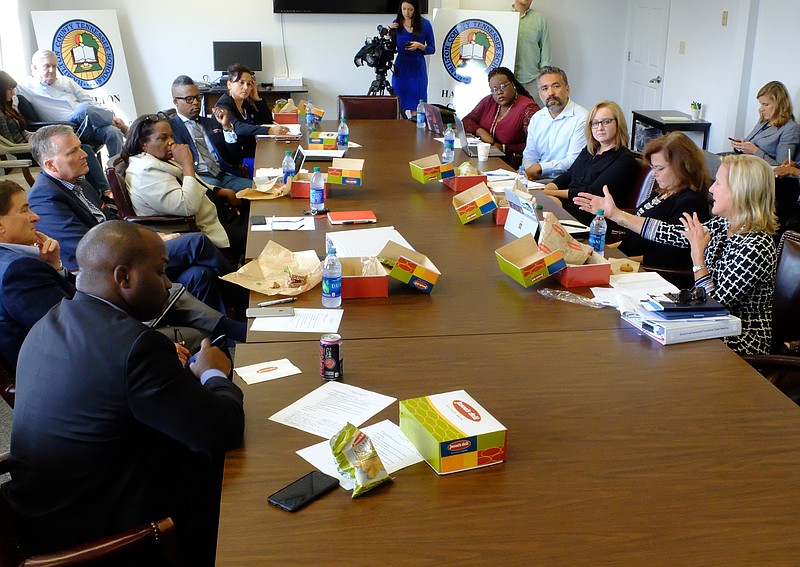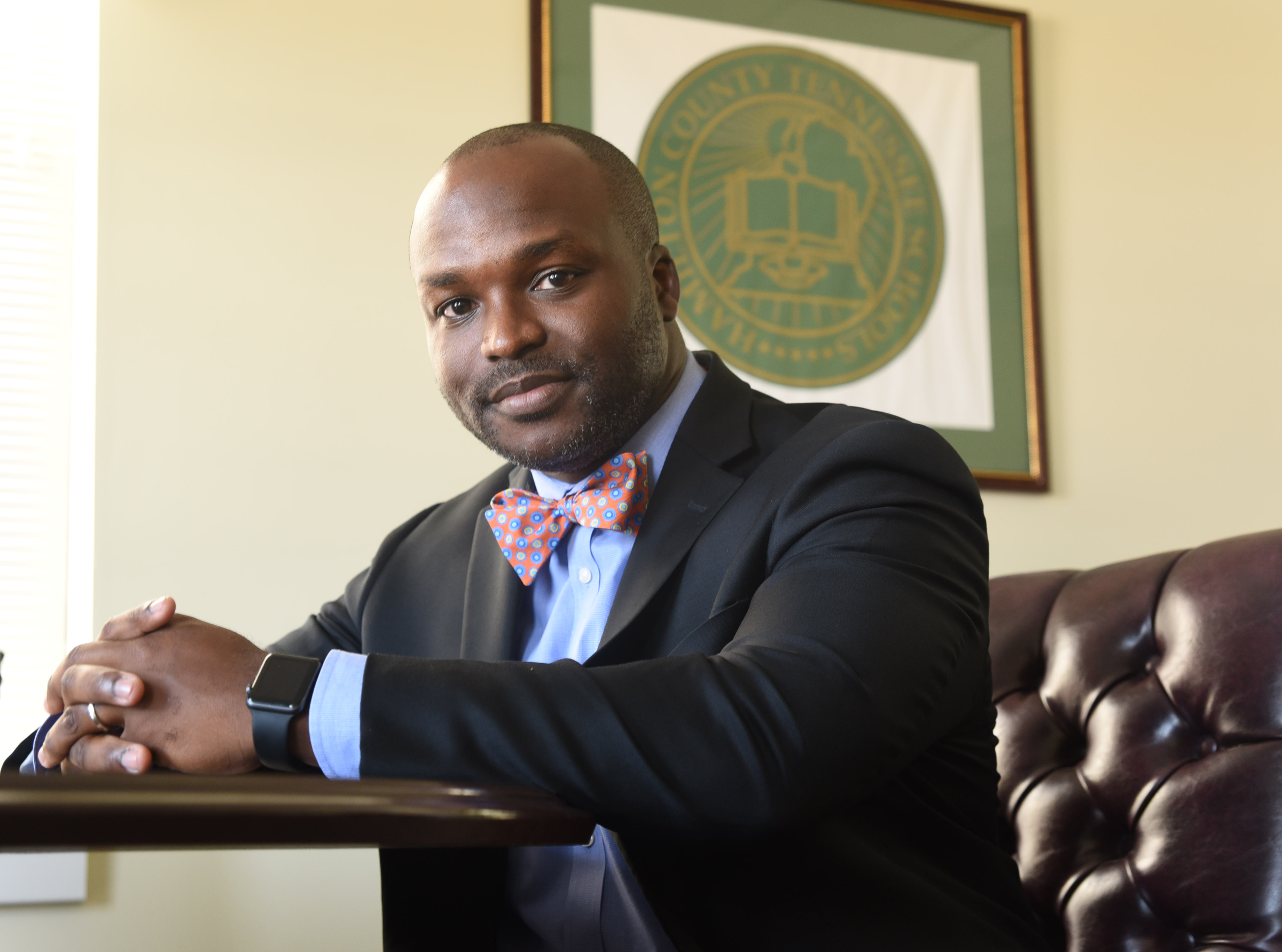We've got lots of best practice here in Hamilton County. You don't need binoculars to find awesome.
Hamilton County Schools Superintendent Bryan Johnson's transition team met Thursday morning to discuss its findings as members work on a new strategic plan for the system.
Representatives of smaller groups discussed how schools across the district can benefit from best practices developed and used in other schools.
"We've got lots of best practice here in Hamilton County," said David Steele, co-chairman of the postsecondary readiness sub-group and vice president of policy education for the Chattanooga Chamber of Commerce. "You don't need binoculars to find awesome."
But, he added, the culture in the Hamilton County school system hasn't been effective at allowing ideas for what works well to spread to other schools across the district.
"When we found awesome stuff, our first thought should be, 'How can we spread this?'" he said. "And instead, we look at it and say, 'That's awesome'" without taking further action, he said.
Johnson announced his picks for the transition team earlier this month. It's made up of about 38 industry leaders, community members, national experts and department personnel.
Members are divided into five subgroups that focus on student achievement, postsecondary readiness, talent development, organizational efficiency and communications and stakeholder engagement. They were given eight weeks in early September to develop approaches to building the new strategic plan.
LaKweshia Ewing, a local entrepreneur and co-chairperson of the communications and stakeholder engagement panel, said her group researched what types of tools already exist for gathering information and feedback from stakeholders. They found one major flaw, she said, because not everyone sees or has access to those tools, be they a survey or other form of gathering feedback.
"There are some tools that already exist in the district that can be universal, that are being used by a subset population of the district," she said. "There are a lot of good pieces on the bus, they may just be on another part of the bus."
Emerson Burch, co-chairperson of the transition team and a consultant, also talked about how the district seems to have specific pockets where certain approaches work really well. He said that model of "kind of steering our own ship" challenges the idea of "all together moving."
Edna Varner, co-chairperson of the talent development sub-group and a senior adviser for the Public Education Foundation, said other parts of the district can learn from the pockets that are doing well.
"The book of clear leadership, one of the things it talks about is a learning environment versus learning factory," she said. "We want vibrant learning environments."
She said the focus should be on the schools' journeys rather than yearly results.
"Sometimes a school can be getting a low score, when the next year could be the year that all of that work for five years finally shows up in the score," she said.
Contact staff writer Rosana Hughes at rhughes@timesfreepress.com or 423-757-6327. Follow her on Twitter @HughesRosana.

